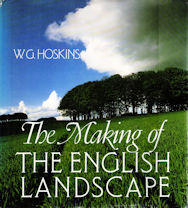Professor Hoskins interprets the palimpsest of the English countryside, revealing here some Celtic field patterns, there the line of an Anglo-Saxon estate boundary. He explores the effect man has had on landscape by the clearance of woodlands and the draining of fens; the building of roads and bridges; the waxing and waning of villages and the shape of towns; the creation of great houses and parks; the effect of parliamentary enclosure; the digging of canals, the coming of railways and the spread of the industrial revolution.
The Making of the English Landscape was originally published in 1955 and, in inaugurating a new branch of historical study, it drew to it many disciples and disciplines over the following decades. The result is that today many of its assumptions need to be modified in the light of research on a number of increasingly specialist fronts. In other cases much of what Professor Hoskins conjectured has proved correct, for he was the first, and perhaps the last, of the polymaths in this field. Time has only served to make the picture more complex and the conclusions more hesitant than those drawn with confidence and clarity by Professor Hoskins. All we can be sure about is that the making of the English landscape was much more complicated, took place over a much longer period and is therefore even more fascinating and rewarding to study than anyone could have thought possible in 1955. As he himself says, ‘everything is older than we think.’
It is not the intention of this new edition to meddle with Professor Hoskins’ original text which remains as he last revised it in 1976. Whatever details are now out of date, it remains as a milestone in the study of history. The new general introduction by Christopher Taylor, together with his individual chapter introductions and margin notes, are provided, however, to point out some of the lines along which scholarship has taken landscape history since the 1950s in the hope that a new generation of readers will continue to draw the same pleasure and inspiration from the English landscape as that first kindled by W. G. Hoskins over thirty years ago.
